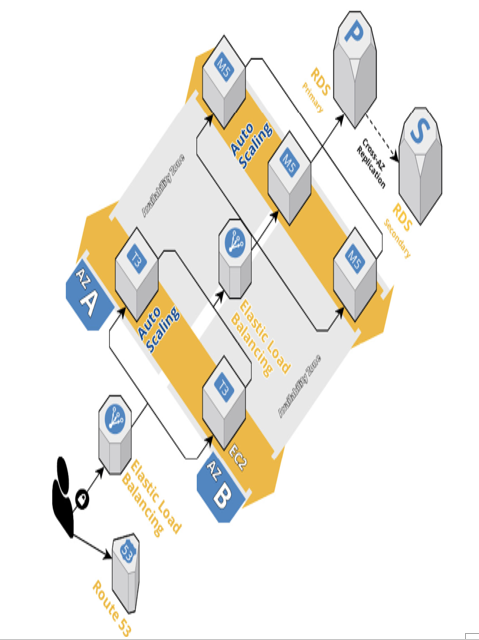Multi-AZ deployments
Many cloud providers allow the deployment of databases in multiple availability zones, ensuring redundancy and minimizing downtime.
Multi-availability zone (AZ) deployments are a high-availability feature provided by cloud service providers, especially in database services such as Amazon RDS, Azure SQL Database, and Google Cloud SQL. Multi-AZ deployments involve creating and maintaining synchronized copies of a primary database instance in multiple availability zones within a cloud region. The goal is to enhance data availability and resilience by ensuring that if one availability zone experiences an outage or failure, traffic can be automatically directed to a standby instance in another zone.
The key aspects of Multi-AZ deployments are as follows:
- Availability zones: Availability zones are physically separate data centers within a cloud region. Each zone has its own power, cooling, and network infrastructure to minimize the risk of correlated failures.
- Synchronous replication: In a Multi-AZ deployment, the primary database instance is synchronously replicated to a standby instance in a different availability zone.
- Automatic failover: If the primary instance becomes unavailable due to hardware or software issues, the cloud platform initiates an automatic failover to the standby instance.
- Data consistency: During automatic failover, any pending changes in the primary instance’s transaction log are applied to the standby to maintain data consistency.
The benefits of Multi-AZ deployments include the following:
- High availability: Multi-AZ deployments offer improved availability by ensuring that there’s always a healthy instance to handle user requests
- Automated failover: In case of a failure in the primary zone, the cloud platform automatically promotes the standby to become the new primary, minimizing downtime
- Disaster recovery: Multi-AZ deployments serve as a disaster recovery solution, safeguarding against data center outages or catastrophic failures
- Enhanced reliability: Redundancy across multiple availability zones improves overall system reliability and reduces the impact of single points of failure
Multi-AZ deployments offer a simple yet effective way to enhance the availability and reliability of cloud-hosted databases. By synchronously replicating data across multiple availability zones and automating failover processes, organizations can ensure a seamless user experience, even in the face of infrastructure failures.
The following figure depicts high availability on EC2 instances, Multi-AZ deployment, and autoscaling, as well as database high availability (primary and secondary RDS):

Figure 9.3: Highly available, scalable architecture
This section was a comprehensive exploration of crucial concepts for ensuring robust database performance in cloud environments. It delves into the principles of high availability, emphasizing the importance of database replication to maintain data consistency and system resilience. The section covers various types of replications, including master-slave, multi-master, and bi-directional, highlighting their specific use cases. Furthermore, it introduces readers to different replication methods such as snapshot-based, log-based, and statement-based, offering insights into their strengths and considerations. The discussion extends to cloud-specific solutions from major providers, including Amazon RDS replication, Azure SQL Database replication, and Google Cloud SQL replication. The section also touches upon failover mechanisms and Multi-AZ deployments, providing readers with a well-rounded understanding of strategies for ensuring high availability and scalability in cloud-based database architectures.
The next section is a concise exploration of essential concepts in optimizing database performance in the cloud. It introduces readers to various types of scaling, focusing on vertical scaling (increasing the power of existing hardware) and horizontal scaling (adding more machines or nodes to a system). The section outlines the significance of scaling in enhancing database capabilities and discusses how cloud environments provide diverse scaling deployment options. Readers will gain insights into the strategic considerations involved in choosing between vertical and horizontal scaling based on your specific performance and resource requirements. The section serves as a foundational guide for those looking to effectively scale their databases in cloud environments for improved performance and responsiveness.